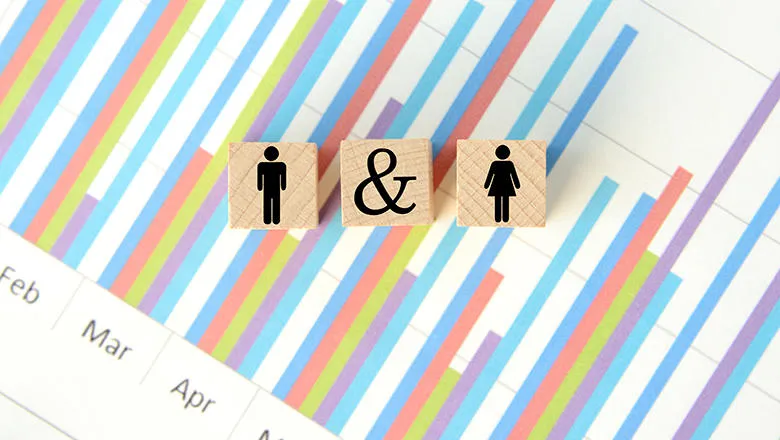22 January 2020
Keeping score on sex equality
Joni Lovenduski
JONI LOVENDUSKI: Gender equality indexes provide useful data to measure progress globally, but they don't tell us the reasons why inequalities persist

Every two years the World Economic Forum publishes its Global Gender Gap Equality Report, in time for its subsequent annual meeting at Davos – taking place this week. The report is based on a gender gap index of countries around the world and this time it shows that women in the UK have fallen from 15th to 21st position, having been leapfrogged by Albania, Canada, Costa Rica, Latvia, Switzerland, South Africa and Spain since 2018.
This index is one of many similar attempts to measure gender inequality including the Gender Inequality Index developed by the United Nations Human Developments Programme, the OECD Social Institutions & Gender Index and the Little Data Book on Gender of the World Bank. The Interparliamentary Union posts a running total of women in legislatures in its Women in National Parliaments database. There are also a number of national and regional reports that track the changes in women’s position over time.
Everyone likes a bit of data to help with their arguments and claims, but it is useful to remember that these reports are snapshots. They tell us that the UK has fallen below Spain in terms of gender equality according to a relatively small set of indicators (usually pay, education, health and political representation). But they do not tell us why. They normally tell us that Iceland, Sweden, Norway and Finland come top of the tables. But again, don’t provide reasons for why this is the case.
The tables of equality are attempts to quantify differences between women and men using available data. They are important because they can be used to alert policymakers to target broad areas with direct funding, and as such are of use to equality advocates claiming priority for their policy area. However, they do fall into a number of traps, notably an over-reliance on available indicators and often headline data rather than in-depth investigations. This contributes to the oversimplification of complex problems.
Inequality tends to be embedded in cultural, family, legal and psychological systems that are difficult to measure. The indicators themselves conflate contrasting problems. The economy is a case in point – care work and other unpaid, but essential, domestic labour is not included in overall indicators of national wealth such as Gross Domestic Product. Pay equality includes not only policy on pay, but also on promotion, training, pensions, recruitment, childcare provisions, family leave and employment stratification. Access to education depends on class, region, race, age, subject specialistation and so forth. It does not cash out in the same way for different groups.
Moreover, the league tables are about differences between women and men in a particular system, they tell us relatively little about absolute levels of inequality across systems. Crucially, the indices rarely move beyond a binary concept of sex. The data on which they are based was historically developed to indicate what men were doing and later were disaggregated to show differences between women and men in sectors of policy interest. They are therefore not gender indices at all, except insofar as they crystalise an outdated concept of gender that pays no attention either to the different lifestyles of women and men or to the intersectionality basis of the claims that characterise genuine equality advocacy.
There are examples of efforts to assess equality on the basis of broader concepts of gender differences. The European Institute for Gender Equality (EIGE) produces an index that includes data on power, time, money, work, knowledge, health and violence in EU member states. While not a global index, and inevitably a simplified set of quantified measures, it has the advantage of paying some attention to intersectionality, starting from a more complicated understanding of gender that includes disability, age, country of birth, ethnicity and family type as well as sexuality, where data are available. Similarly, the SDG Gender Index, an initiative of the Equal Measures 2030 project, tabulates data on some 51 development issues in 129 countries, thus offering an advance on less contextualised league tables.
How much do the tables tell us about the outcomes of struggles for women’s equality? They generally show progress at the same time as highlighting continuing large inequalities. It is therefore possible to use them to show that things are getting "better". But they beg many questions. How much does it matter that women’s circumstances are improving relative to men’s if that process is driven by an austerity-based levelling down for all but the one per cent? How useful is a greater share of formal political power if continuing and relentless sexual harassment soon drives women out of the legislatures? How useful is formal pay equity in organisations that resist promoting women? These are contextual variables that ought to inform equality tables.
Even so, while it is unlikely that many people will choose where to live on the basis of such international league tables, they have their uses. They provide employment for the equality industry and clues, however basic, for equality policy. They also offer a narrative of progress or slippage, success or failure, which makes it possible to use the numbers to argue that change is too slow and in some cases can be reversed.
Joni Lovenduski is is professor emerita at Birkbeck College London. She is a Visiting Professor and Member of the Global Institute for Women's Leadership Advisory Council.
